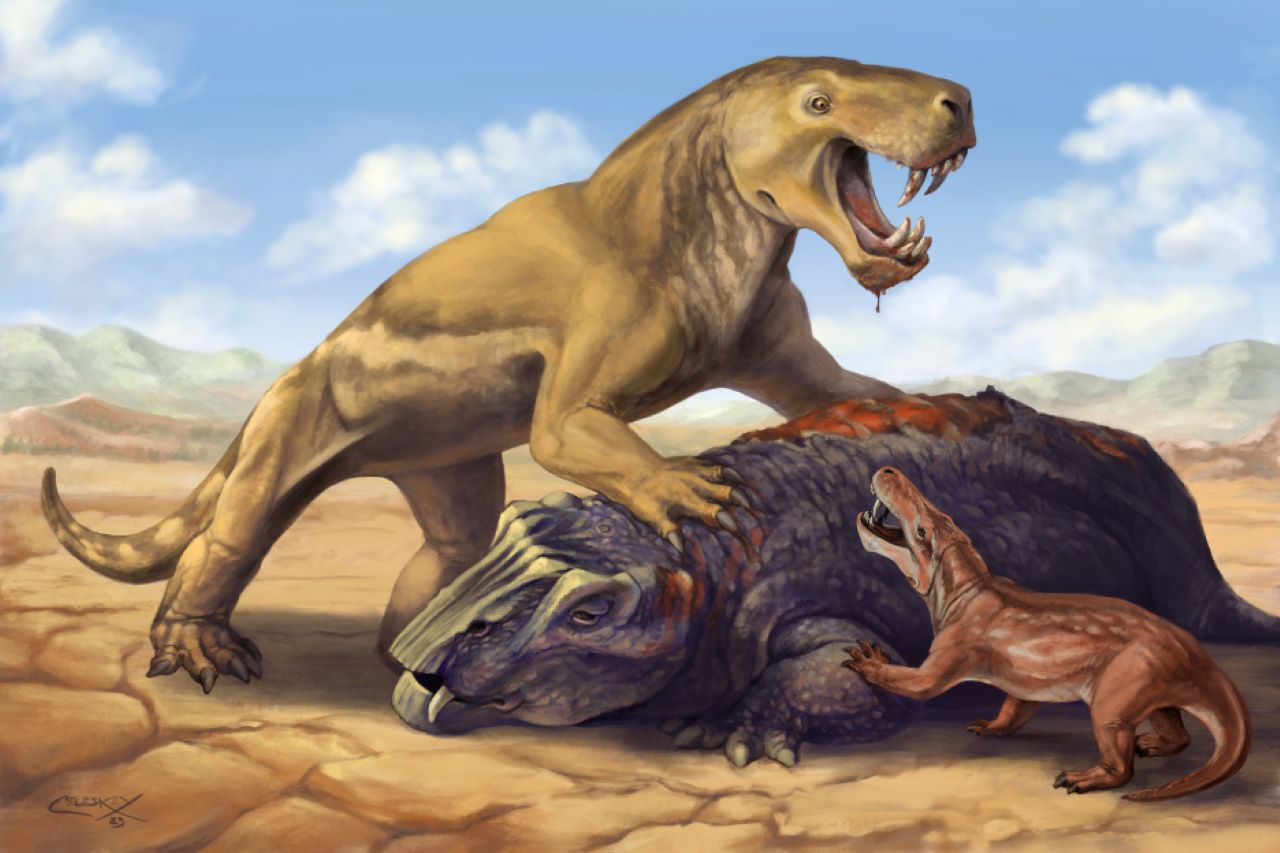Fossil Discovery Reveals Ancient Predator-Prey Dynamics

A remarkable fossil find in Canada has provided new insights into the predator-prey interactions of the Cretaceous Period. Unearthed in Dinosaur Provincial Park, Alberta, this fossilized neck bone belonged to a juvenile flying reptile known as Cryodrakon boreas. Dating back 76 million years, the fossil exhibits clear evidence of a bite from a crocodile-like predator. This discovery not only sheds light on the behaviors of ancient reptiles but also enhances our understanding of the complex ecosystems that existed during that era.
Pterosaur Bone Found With Bite Mark
The fossilized vertebra was identified as belonging to a young Azhdarchid pterosaur, which had a wingspan of approximately two meters in its juvenile stage. The bite mark on the bone measures about four millimeters in diameter, indicating it was inflicted by a crocodilian predator. This significant finding was confirmed through advanced micro-CT scans conducted by a research team from the Royal Tyrrell Museum of Paleontology, the University of Reading, and the University of New England. The scans revealed that the damage occurred either during the pterosaur’s life or shortly after its death, rather than during the fossilization process.
Dr. Caleb Brown, a curator at the Royal Tyrrell Museum of Paleontology, emphasized the rarity of such discoveries. Pterosaur bones are notoriously fragile, making it uncommon to find evidence of predation. The presence of a bite mark on a juvenile specimen is particularly extraordinary. This discovery not only highlights the fragility of these ancient creatures but also provides a unique glimpse into their interactions with other species in their environment.
Insights Into Prehistoric Predation
The fossil was discovered in July 2023 during an international field course led by Dr. Brian Pickles, a palaeoecologist at the University of Reading. Dr. Pickles noted that bite marks on fossils serve as valuable evidence of interactions between different species. This specific find suggests that crocodilians preyed on or scavenged young pterosaurs in the region, indicating a complex food web in the ancient ecosystem.
This discovery marks the first documented case in North America of crocodilian feeding behavior involving Azhdarchid pterosaurs. Similar evidence has been reported in Romania, which highlights the opportunistic feeding habits of these ancient predators. The study underscores the intricate ecological relationships that existed millions of years ago, revealing how different species interacted and coexisted in their environments.
Implications for Understanding Ancient Ecosystems
The implications of this discovery extend beyond the individual species involved. It provides a broader understanding of the dynamics within prehistoric ecosystems. The interactions between predators and prey are crucial for maintaining ecological balance. By studying these relationships, scientists can gain insights into how ecosystems functioned in the past and how they may have evolved over time.
The findings from this fossil not only contribute to our knowledge of pterosaur biology but also illustrate the role of crocodilians in the ancient food chain. Understanding these interactions helps paleontologists piece together the complex web of life that existed during the Cretaceous Period. As more fossils are discovered and analyzed, they will continue to enrich our understanding of prehistoric life and the evolutionary processes that shaped the world we know today.
Observer Voice is the one stop site for National, International news, Sports, Editor’s Choice, Art/culture contents, Quotes and much more. We also cover historical contents. Historical contents includes World History, Indian History, and what happened today. The website also covers Entertainment across the India and World.

